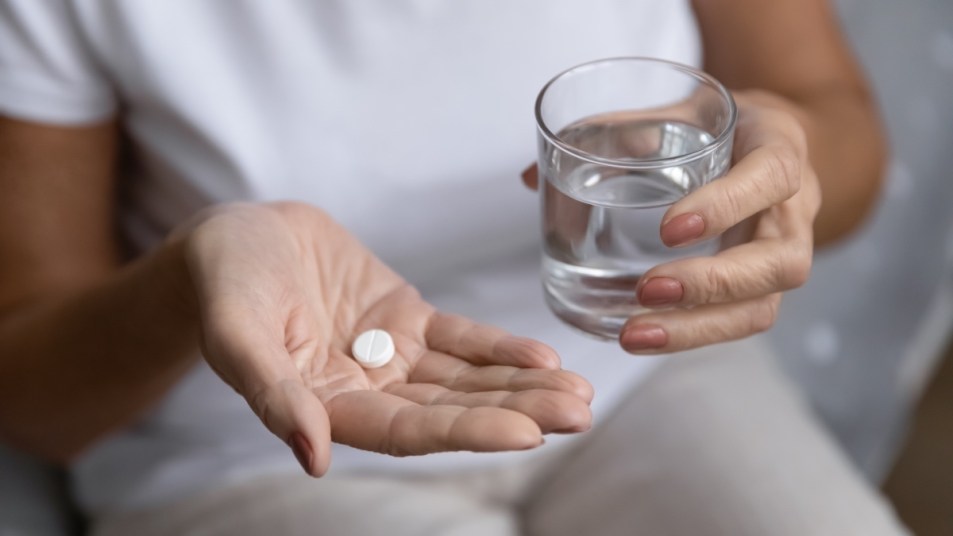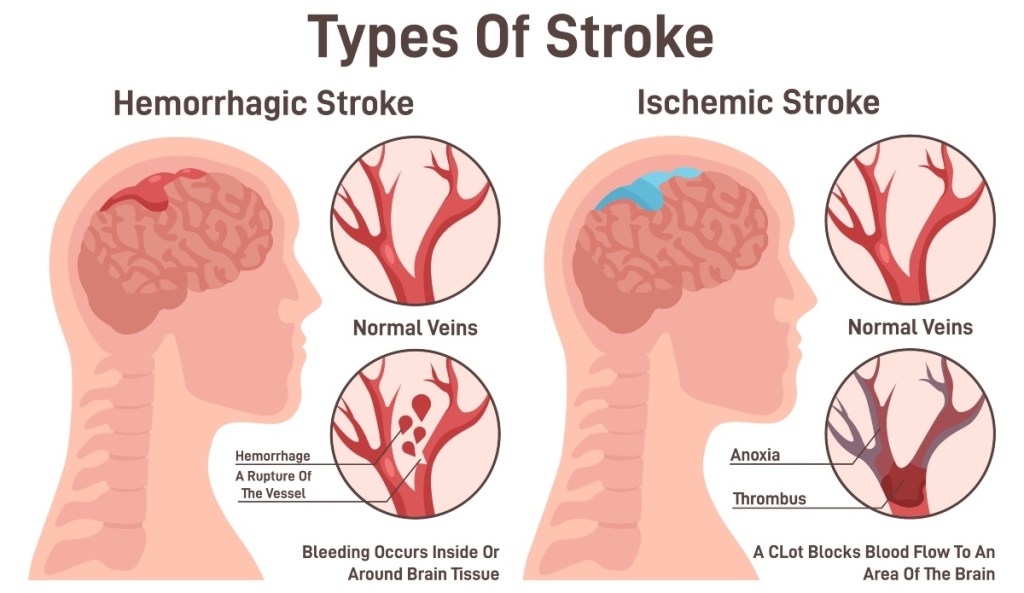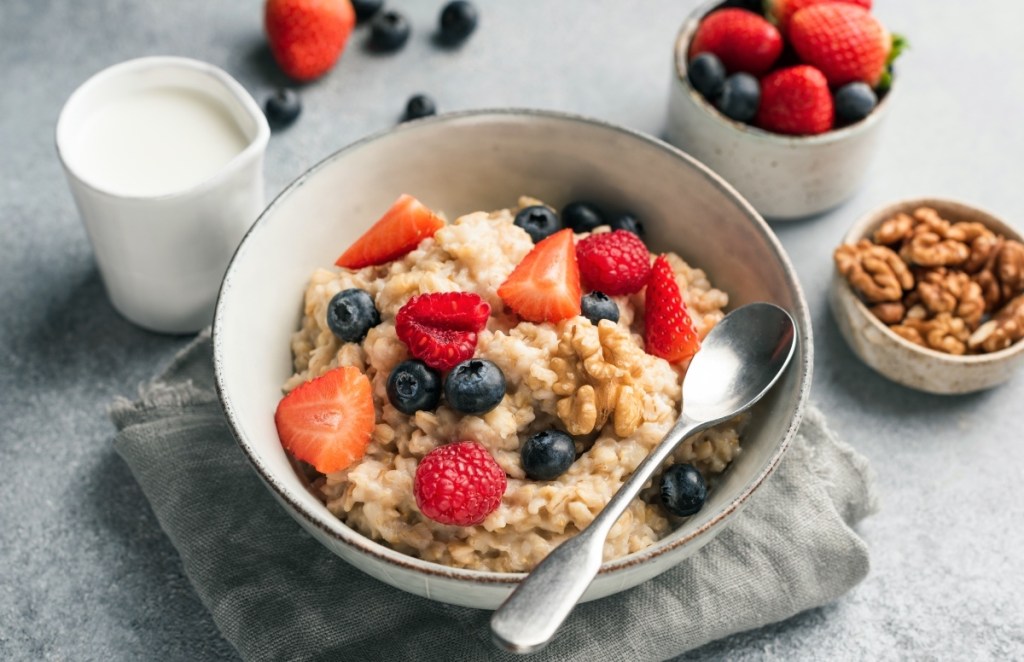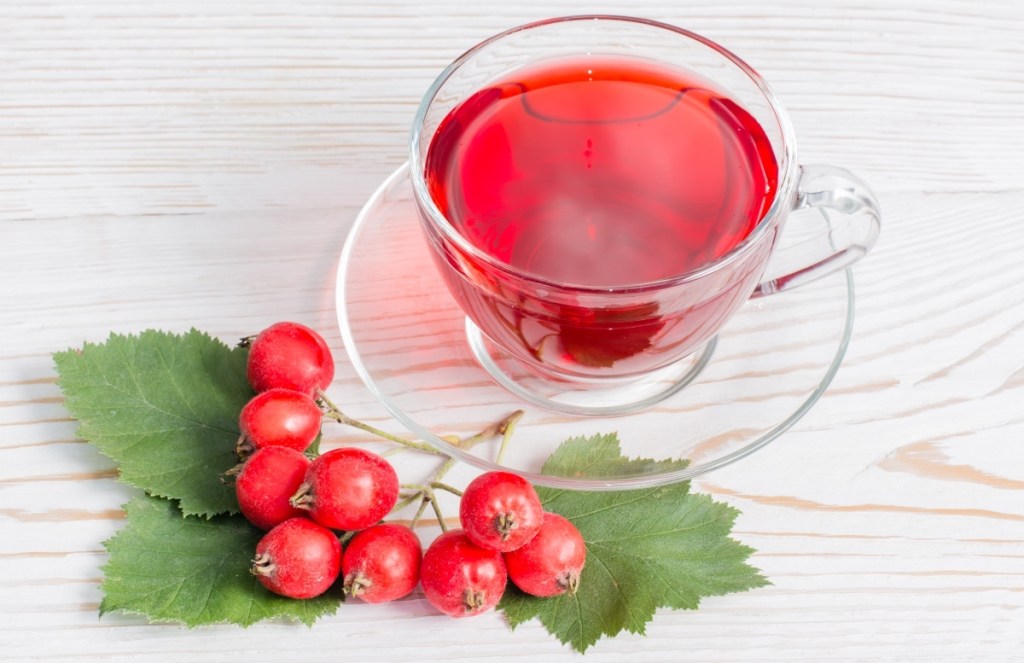12 Easy, Study-Proven Ways to Slash Your Risk of Having a Stroke — And Why Daily Aspirin Isn’t One of Them
For women with no history of heart attack or stroke, daily aspirin can raise risk of a brain bleed

While it may not get the same attention as other health conditions, the Centers for Disease Control and Prevention (CDC) reveals one in five women between the ages of 55 and 75 will have a stroke. The good news: The vast majority of strokes are preventable. Simple tweaks to your lifestyle can dramatically reduce your risk. And for some, taking a daily aspirin for stroke prevention can help as well. Read on to find out when aspirin is worth it — and when to skip it.
Understanding the two types of strokes
A stroke affects the arteries leading to and inside the brain. They occur when a blood vessel that carries nutrients and oxygen to the brain is blocked by a clot or bursts, halting blood flow to the brain. There are two types of strokes: ischemic and hemorrhagic. Roughly 87% of strokes are ischemic, meaning they are caused by an obstruction in a blood vessel supplying blood to the brain. The main cause of this blockage is fatty deposits in blood vessels known as plaque. A hemorrhagic stroke, which accounts for just 13% of strokes, happens when a weakened blood vessel bursts and causes bleeding in the brain.

Those who should take aspirin for stroke prevention
You likely know aspirin as a pain reliever, but it also works essentially as a mild blood thinner. This makes it beneficial for those who have previously experienced heart trouble as well as for those in the midst of an attack.
“People who have heart disease, who have already had blockages, have had bypass surgery, have had a history of stroke — that’s almost always an indication for lifelong aspirin,” explains Boback Ziaeian, MD, assistant professor-in-residence at UCLA School of Medicine. “If you’ve already had heart blockages, or heart attacks or stroke, those people need an aspirin or sometimes even a stronger medication.”
It’s also something you’ll want to reach for you if you’re currently experiencing a heart attack or stroke. “Aspirin is an anti-platelet agent, and most strokes and heart attacks are caused by plaque rupture and clot formation,” Dr. Ziaeian says. “And so aspirin is a very good treatment for people actively having a stroke and actively having heart attacks.” (Click through to see how taking a quercetin supplement can reduce stroke risk.)
Those who should avoid aspirin for stroke prevention
Dr. Ziaeian cautions that daily aspirin use isn’t necessary or even helpful for those who haven’t had previous strokes or other cardiovascular conditions. A co-author of the American Heart Association’s stroke prevention guidelines, Dr. Ziaeian points to research in Jama Network Open that found aspirin has little effect on preventing ischemic strokes in relatively healthy adults older adults.
“We didn’t really get much of a visible benefit in reducing ischemic stroke,” he says. “And there was a very small signal that there was a harm with more bleeding strokes.” Meaning taking a daily aspirin as a preventative measure for folks with no history of cardiac events could potentially increase the risk of a brain bleed if you were to have a stroke.
An increased risk of bleeding is another drawback to taking aspirin. In that case, Ziaeian says being on a daily aspirin regimen can cause more harm than good. “That’s always a concern whenever we use blood thinners in any situation,” he says. “With anti-platelet or anticoagulation drugs, there’s always a slightly higher rate of those types of events.”
Is aspirin for stroke prevention better than lifestyle changes?
Ultimately, Dr. Zaeian says the benefits of daily aspirin use can’t compare to the difference lifestyle changes can make when it comes to preventing future strokes or cardiovascular disease. “Heart disease and stroke are largely preventable,” he says. CDC experts note that up to 80% of strokes are preventable. “The focus really should be on tobacco cessation, blood pressure control and cholesterol treatment, because those things work a lot better to prevent stroke.”
Whether your doctor advises an aspirin regimen or not, there are a wealth of little lifestyle tweaks that can make a big difference when it comes to stroke prevention. Here, the 12 best simple, study-proven strategies that keep strokes at bay.
The best ways to reduce stroke risk naturally
1. Top your oatmeal with berries
Or savor the juicy gems fresh with a bit of whipped cream. It turns out every tasty bite of berries slashes your stroke risk. Scientists reporting in the European Journal of Clinical Nutrition found that folks with a high intake (about 3 ½ servings daily) of raw fruits and vegetables had a 30% lower incidence of stroke. What makes berries such a smart bet? Their anthocyanins widen artery walls and lower blood pressure. (Click through to see the simple hack that makes fresh strawberries last for weeks.)

2. Sip a tropical coconut-banana smoothie
A banana coconut smoothie is more than just a delicious way to start your day. It also brims with potassium. And research in BMJ found shoring up your stores of this blood pressure-lowering nutrient reduces stroke risk by 24%. Simply blitz together a frozen banana and coconut water for a quick and easy morning meal.
3. Chew a piece of gum after eating
When bacteria from the mouth enter the bloodstream, it can cause harmful blood vessel inflammation. But simply keeping your gums healthy reduces stroke risk up to 50%, a study in the European Heart Journal suggests. Try chewing xylitol-sweetened gum after eating, which research in PLOS ONE found removes 100 million gum-disease causing bacteria. Also smart: Flossing before brushing, which removes 56% more troublemaking bacteria, a study in the Journal of Periodontology found. (Click through to learn how gum disease self-care tips like chewing gum can ward off strokes.)
4. Take a break to water your plants
Trading 8 minutes of sitting each hour for 8 minutes of walking or puttering about (like refilling your coffee or watering your garden) reduces your odds of having a stroke by as much as 72%, suggests a study in Frontiers in Neurology. Simple, everyday movements “count” as daily exercise, which keeps a lid on the clot-causing blood protein known as fibrinogen. Need a reminder to move? Set an hourly alarm, or if you’re watching TV, get up for at least four commercial breaks every hour. Also smart: Boogieing through your chores. Simply cue up three songs — which totals about 8 minutes — and move and groove while you tidy up.

5. Pour yourself another glass of glass of water
Staying well-hydrated keeps blood cells from clumping together and forming clots. That’s why Loma Linda University researchers found that stroke risk was 53% lower in folks who drank at least 5 cups of water daily compared to those who drank 2 cups or less. For an easy way to down enough H2O, fill a pitcher with five cups of water in the morning and finish it by the end of the day. Also smart: Using a free app like Plant Nanny Water Tracker Log (for Apple and Android). Every time you log a drink, it helps a plant in your virtual garden grow! (Click through to discover how a motivational water bottle can also help you meet your hydration goals.)
6. Snack on carrots
Channeling Bugs Bunny is good for your ticker. A Harvard University study found women who ate one large carrot daily lowered their stroke risk by 68%. The beta-carotene and vitamin E in the veggie block cellular damage that contributes to strokes. If you’re snacking on baby carrots, eat at least 8 to get the benefit. Tip: Dip carrots in hummus or full-fat dressing rather than fat-free substitutes. Ohio State University research suggests fat bolsters absorption of stroke-fighting nutrients like beta-carotene by up to 1,530%. (Click through to learn the secret ingredient that makes roasted carrots taste amazing.)
7. Relax with a cup of hawthorn berry tea
Enjoying 2 to 3 cups of coffee and 2 to 3 cups of tea daily lowers stroke odds 32%, thanks to polyphenols that keep arteries elastic. And while green tea brims with polyphenols, cardiologist Patrick Fratellone, MD, says hawthorn berry tea is even better at preventing stroke. Its flavonoids lower blood pressure and improve circulation. Plus, a study in the Journal of Ethnopharmacology suggests hawthorn berry extract significantly reduces artery-clogging LDL cholesterol, a stroke risk factor, within 12 weeks. Prefer a capsule instead of a cuppa? Dr. Fratellone advises 250 mg. hawthorn extract twice a day. One to try: Swanson Hawthorn Extract (Buy from Amazon.com, $14.09).

8. Crunch on spicy peanuts
Noshing on a handful of spicy peanuts daily is a home run for your heart. The reason? American Heart Association research finds snacking on the savory nuts (as little as four a day!) lowers stroke risk 20%. Meanwhile, a study in the Journal of the American College of Cardiology discovered that a dusting of chili pepper acts as a potent anti-inflammatory. This blocks plaque from building up on arteries, lowering stroke risk up to 50%. (Prefer peanut butter? Click through to see the easy trick to preventing oil from forming on top of your PB.)
9. Laugh along to your favorite old sitcoms
Whether she’s stomping grapes or doing a Vitameatavegamin audition, classic YouTube clips of I Love Lucy (or any silly sitcom!) are guaranteed to elicit belly laughs. And that’s good news, since scientists reporting in the Journal of Epidemiology found women who laughed daily were 62% less likely to suffer strokes than those who didn’t. A hearty chuckle combats climbs in blood pressure that can damage blood vessels feeding the brain. Animal lover? Search YouTube for “funniest cat (or dog) videos” instead. (Click through to our sister site to find funny nurse jokes guaranteed to make you giggle.)
10. Opt for whole wheat over white breads
Taking a night off from cooking dinner? When ordering take out, ask for a whole wheat pizza crust or sandwich roll over white bread. In a Harvard University study, stroke risk dropped 40% in women who ate three servings of whole grain foods per day. Experts explain that the fiber in and phytochemicals in whole grains lower levels of artery-clogging LDL cholesterol while fighting inflammation that contributes to clots. (Click through to our sister site to discover how wheat germ can also help speed weight loss.)
11. Treat yourself to a warm bath
Another reason to sink into a relaxing bath at the end of a long day: A warm soak increases your body’s core temperature. This enhances blood flow and reduces wear and tear on blood vessels, a study in Heart shows. It works so well, scientists found folks who took daily baths had a 26% lower risk of stroke compared to those who soaked just twice a week.

12. Turn in earlier to catch more Zzzs
A study in the Journal of the American Heart Association found that folks with irregular sleep cycles (not being able to fall asleep within 1 ½ to 2 hours of your usual bedtime) were 39% more likely to harbor high levels of calcium in their arteries. That’s a problem, since it can hamper blood flow and lead to a stroke. Irregular sleep disrupts your circadian rhythm, which helps regulate cardiovascular function. To make falling asleep easier, cue up white noise. Harvard scientists say the soft blend of frequencies helps you nod off 38% faster. (Click through to learn how white noise also tames stress.)
Read on for more ways to safeguard your heart:
- Slash Your Stroke Risk With These Supplements and Antioxidant-Rich Foods
- A New Study Says the Flu Shot May Reduce Your Risk of a Stroke — Here’s Why
- Constantly Stressed? You May Be at Higher Risk of Heart Disease and Stroke
This content is not a substitute for professional medical advice or diagnosis. Always consult your physician before pursuing any treatment plan.

















